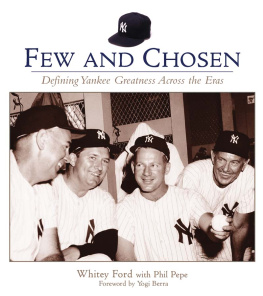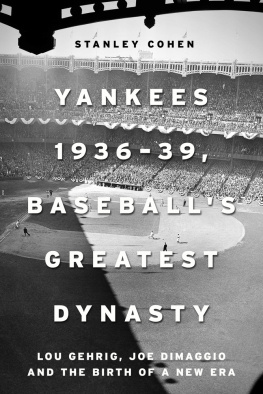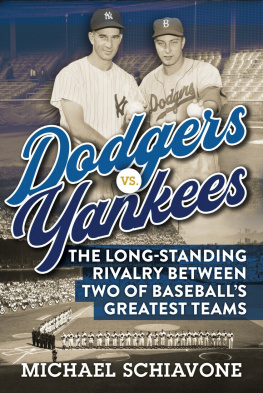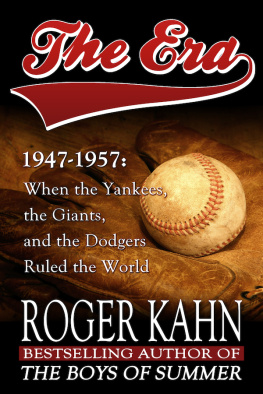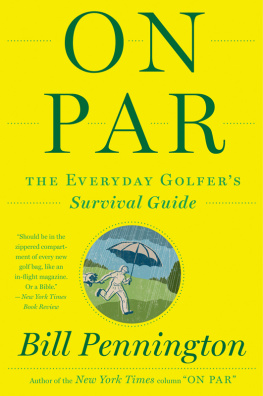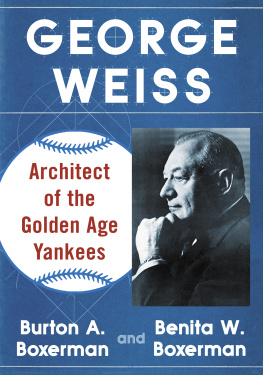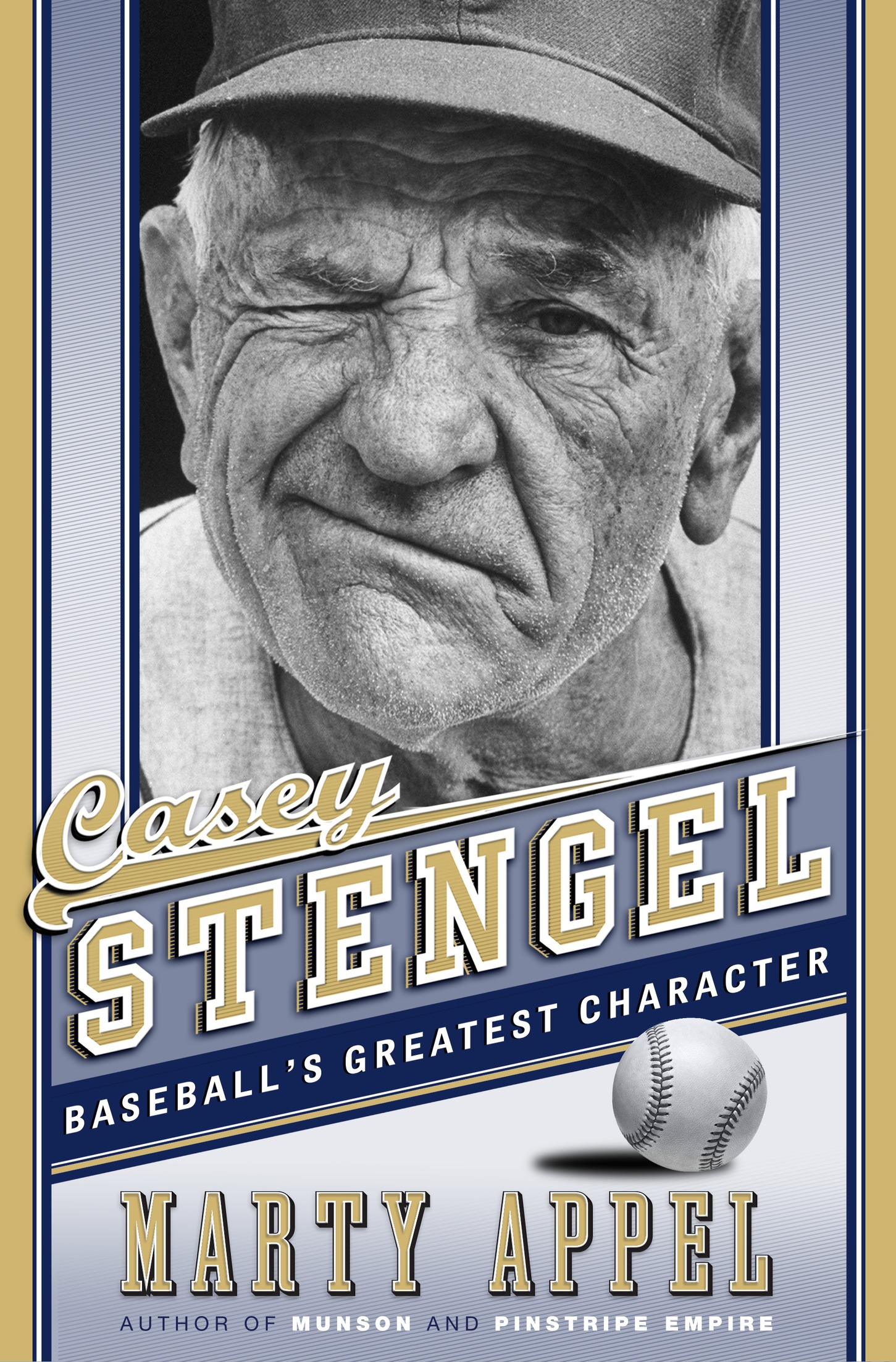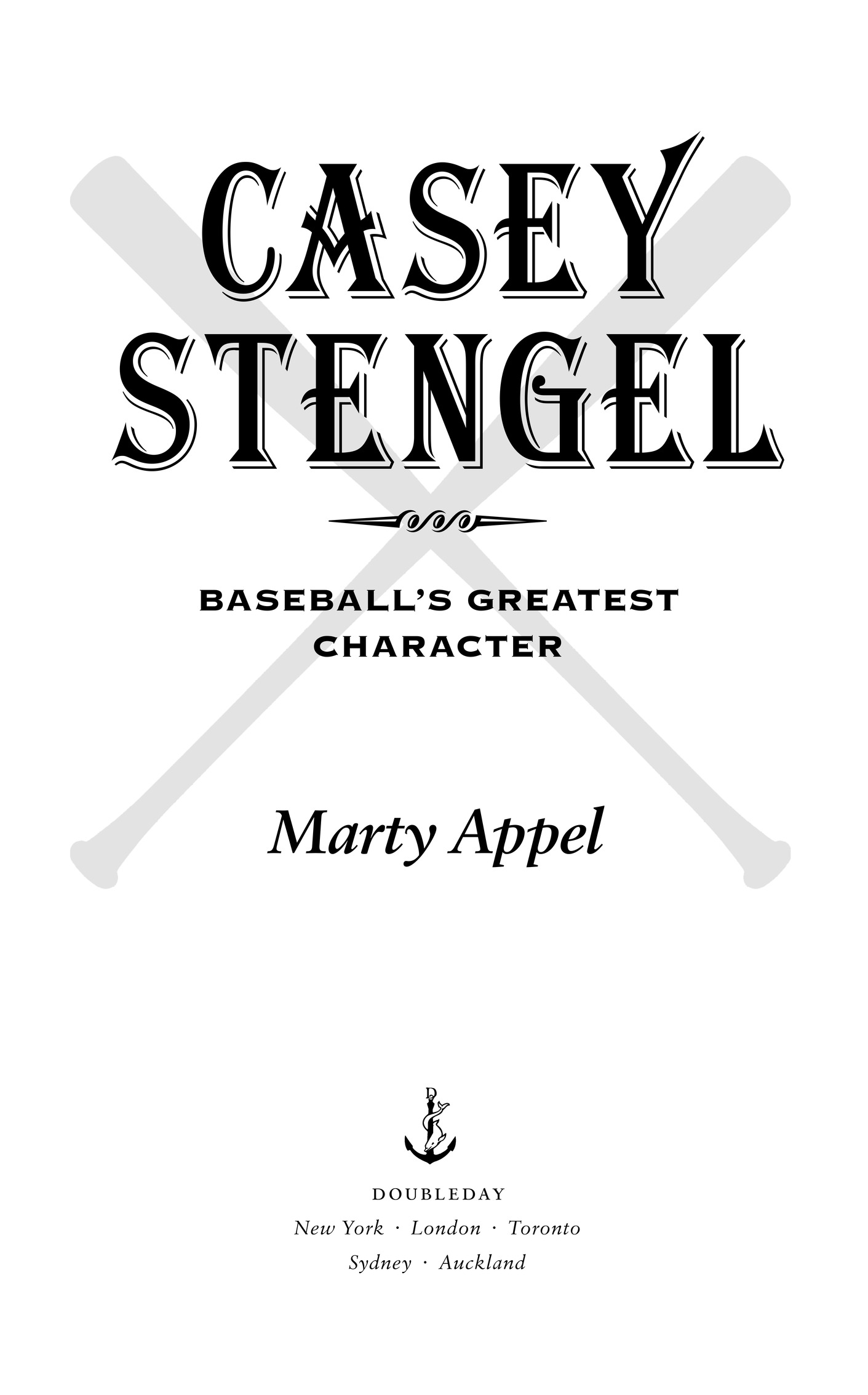Also by Marty Appel
Pinstripe Pride: The Inside Story of the New York Yankees (for young readers)
Pinstripe Empire: The New York Yankees from Before the Babe to After the Boss
162-0: The Greatest Wins in Yankee History
Munson: The Life and Death of a Yankee Captain
Now Pitching for the Yankees
Slide, Kelly, Slide
When Youre From Brooklyn, Everything Else Is Tokyo (with Larry King)
Great Moments in Baseball (with Tom Seaver)
Yogi Berra
Working the Plate (with Eric Gregg)
Joe DiMaggio
My Nine Innings (with Lee MacPhail)
Yesterdays Heroes
The First Book of Baseball
Tom Seavers All-Time Baseball Greats (with Tom Seaver)
Batting Secrets of the Major Leaguers
Thurman Munson: An Autobiography (with Thurman Munson)
Baseballs Best: The Hall of Fame Gallery (with Burt Goldblatt)
Copyright 2017 by Marty Appel
All rights reserved. Published in the United States by Doubleday, a division of Penguin Random House LLC, New York, and distributed in Canada by Random House of Canada, a division of Penguin Random House Canada Limited, Toronto.
www.doubleday.com
DOUBLEDAY and the portrayal of an anchor with a dolphin are registered trademarks of Penguin Random House LLC.
Grateful acknowledgment is made to Robert Lipsyte for permission to reprint an excerpt from SportWorld: An American Dreamland (New York: Quadrangle, 1975); and Sporting News for permission to reprint excerpts from issues published on March 8, 1934; August 8, 1956; December 4, 1957; and October 1, 1958. All rights reserved.
Cover images: Casey Stengel by Donald Uhrbrock/The LIFE Images Collection/Getty Images; (ball) by Jules Frazier/Getty Images
Cover design Michael Windsor
Library of Congress Cataloging-in-Publication Data
Names: Appel, Marty, author.
Title: Casey Stengel : the greatest character in baseball / Marty Appel.
Description: First edition. | New York : Doubleday, [2017]
Identifiers: LCCN 2016027618 (print) | LCCN 2016028538 (ebook) | ISBN
9780385540476 (hardcover) | ISBN 9780385540483 (ebook)
Subjects: LCSH: Stengel, Casey. | Baseball managersUnited StatesBiography.
Classification: LCC GV865.S8 A66 2017 (print) | LCC GV865.S8 (ebook) | DDC
796.357092 [B]dc23
LC record available at https://lccn.loc.gov/2016027618
Ebook ISBN9780385540483
v4.1_r1
ep
Contents
My brother, Norman Appel, a brilliant chemist, passed away during this project. I liked to tell people that I knew baseball trivia, and he knew everything else. In his honor, I dedicate this book to his three sons, my nephews, Scott, Andrew, and Brad.
INTRODUCTION
I f Casey Stengel had called it a career in 1948, after winning the Pacific Coast League championship with Oakland, he would have ridden off into the sunset with his beloved wife, Edna, proudly concluding a thirty-nine-year run in pro baseball.
And at fifty-seven (or fifty-eight) years old (his age was still in dispute at that time), he would have faded into that sunset and into baseball oblivion. At that point, despite the minor-league pennant, he was just a .284 career platoon outfielder who had played with five National League clubs over fourteen seasons, then served as a mediocre National League manager who was regularly in the second division. And lets face it, who remembers the managers of minor-league champions?
We fast-forward to 1965, when he retired, and he is a legend, bound for the Hall of Fame. And after he won ten pennants with the New York Yankees and then put the New York Mets on the map as their first manager, we see how patience, knowledge, and success can come together to rewrite the ledger.
Nobody ever did it quite like him. By the forceful combination of an unmatched baseball mind and an over-the-top personality, he ground it out for four decades before suddenly being recognized not only as a genius on the field, but as an American folk hero.
Casey Stengel had the genius to cultivate his friendships and associations, always looking out for the next job whenever he needed one. (And to get rich in the oil business while he was at it.) At last, his perseverance led him to the Yankees managerial position, and five consecutive world championships. This feat is unmatched to this day. It may never be matched.
When the MLB Networks Prime 9 named him Baseballs Greatest Character in 2009, there were certainly a few generations of younger fans who were unfamiliar with him. But many more remembered him as a New York manager, and more yetalbeit in smaller numbersstill remembered his long and winding road to get there. Still, good for MLB Network, because the citation was spot-on. And it awoke a lot of younger fans who were interested in just what made this character such a character. He even out-Yogid his own protg Yogi Berra to win top honors. (Yogi finished second).
My friend the late Robert Creamer wrote a landmark book about Casey more than three decades ago, and I was fortunate this time around to have an unpublished memoir by Edna available to me, as well as access to many digitized newspapers for online research that did not exist when Bob did his research. Newspapers in Caseys small minor-league towns were now available, offering newly discovered material. There was, in short, enough content to justify a new biography for this fascinating man.
I hope you enjoy the splendid life of Casey Stengel, to borrow one of his favorite words.
PART ONE
1
MAIL CALL
I t was time for the mail at the Stengel home.
Casey Stengel, now nearly eighty, loved this time of day. He would get up to three hundred letters every week, and since his home addressand phone number, of coursewere listed in the phone book under Stengel, Charles Casey, it was not hard to know where to send a fan letter: 1663 Grandview Avenue, in Glendale, California. He and his wife, Edna, had lived there since her father built the place forty-six years before, in 1924. People wanted his autograph, and he loved that they did.
Now, in 1970, in his retirement years, the home was a splendid place to be Casey Stengel. Old friends would visit, or new ones would just ring the bell, and he would regale them with stories, jumping with ease from Babe to Joe D to Yogi to Mickey to Marvelous Marv.
In his den, he would sit back in his ancient Yankee underwear (Edna was always on him to wear Mets underwear) and observe the world through six decades of baseball and worldly wisdom.
The home sat on a quiet two-lane street in a fashionable neighborhood, near the homes of the USC baseball coach Rod Dedeaux and Babe Herman, his fellow Brooklyn Dodger alum from the 1910s. Most people thought of Casey as either a Yankee or a Met, but of course he was a baseball lifer, who had played or managed almost everywhere and played with or against nearly everyone.
He batted against Grover Cleveland Alexander, chased fly balls hit by Babe Ruth, sent Ron Swoboda up to pinch hit, and moved Cleon Jones to left field. His career had spanned John McGraw and Tug McGraw.


